Indian Society and Social Issues: March 2025 UPSC Current Affairs | Sociology Optional for UPSC (Notes) PDF Download
| Table of contents |

|
| International Women’s Day 2025 |

|
| Challenges in Slum Redevelopment |

|
| SC Upholds Disability Rights as Fundamental |

|
| Rising Obesity Burden in India |

|
International Women’s Day 2025
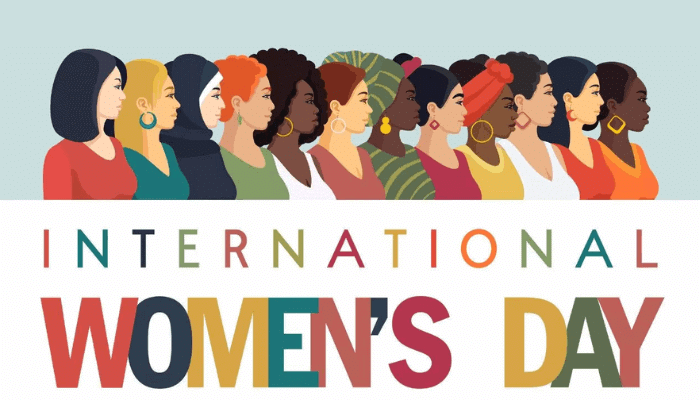
Why in News?
International Women's Day is celebrated globally on 8th March to recognize women’s achievements across cultural, economic, and political spheres. Additionally, the year 2025 is significant as it marks the 30th anniversary of the Beijing Declaration and Platform for Action (BPfA), a landmark commitment to women's rights.
Key Takeaways
- The theme for 2025 is “For ALL Women and Girls: Rights. Equality. Empowerment.”
- International Women’s Day serves as a platform to advocate for women's rights and highlight gender disparities.
- The United Nations officially recognized International Women's Day in 1975.
Additional Details
- What is International Women’s Day? It is a special day dedicated to honoring and advocating for women's rights in politics, society, and the economy.
- History: The idea was proposed by German activist Clara Zetkin, leading to the first celebrations in 1911 in the USA and Europe.
- Purpose: It serves to address crucial issues such as workplace equality, reproductive rights, and leadership representation.
What is the Beijing Declaration and Platform for Action?
- Beijing Declaration and Platform for Action (1995): Adopted at the 4th World Conference on Women in Beijing, China, it is a key blueprint for promoting women's and girls' rights.
- Areas for Action: It identified 12 key areas for urgent action on gender equality.
- The Beijing+30 Action Agenda marks the review and appraisal of its implementation, focusing on six key areas.
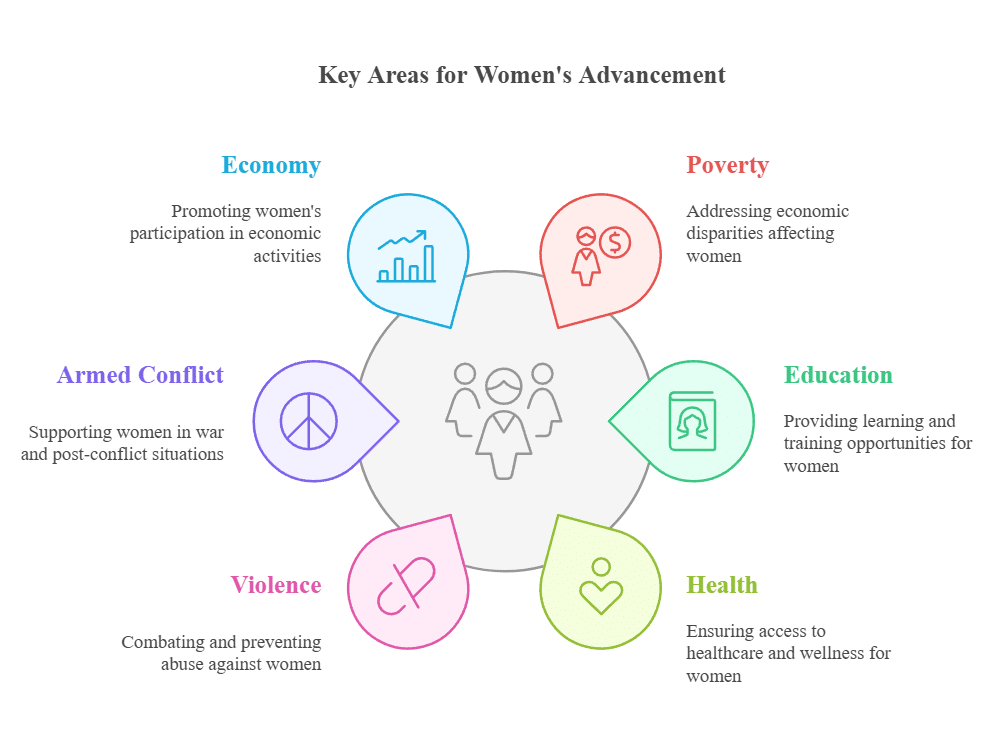
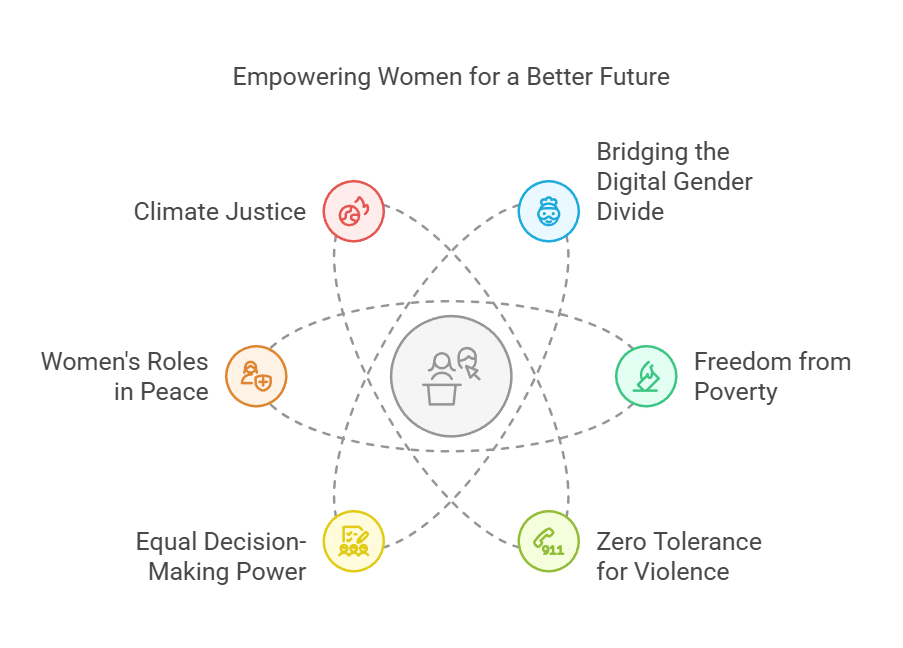
What is the Current Status of Women in India?
- Maternal Health: Institutional deliveries have risen to 95%, reducing maternal mortality from 130 to 97 per 100,000 births (2014-2020).
- Education & Skills: Initiatives like Beti Bachao Beti Padhao have improved the sex ratio and female higher school enrollment.
- Financial Inclusion: 100 million women have gained financial access through Self-Help Groups (SHGs), promoting economic independence.
- Political Representation: The Women’s Reservation Act, 2023, secures 33% legislative representation for women, enhancing their role in governance.
- Women in Science & Technology: Programs like Gender Advancement for Transforming Institutions (GATI) support women's participation in STEM fields.
What are the Challenges to Women Empowerment?
- Political Underrepresentation: Women hold only 27% of parliamentary seats, which limits inclusive policy-making.
- Workplace Discrimination: Women earn only 51% of men's income, contributing to deepening inequality.
- Unpaid Care Work: Women spend 2.3 times more time on unpaid care work than men, limiting their education and job opportunities.
- Legal Barriers: In many countries, women lack equal rights in marriage and divorce, and protections against gender-based discrimination are insufficient.
Way Forward
- Gender-Responsive Budgeting: Increase funding for women's education, health, and social security.
- Strengthening Legal Protection: Eliminate discriminatory laws and strengthen enforcement of gender violence laws.
- Economic Empowerment: Ensure women have equal access to resources and support for entrepreneurship.
- Bridging Workplace Inequality: Encourage flexible work arrangements and support for working mothers.
In conclusion, while significant progress has been made in promoting women's rights and gender equality, persistent challenges remain. Addressing these issues requires concerted efforts through policy measures and community engagement.
Challenges in Slum Redevelopment
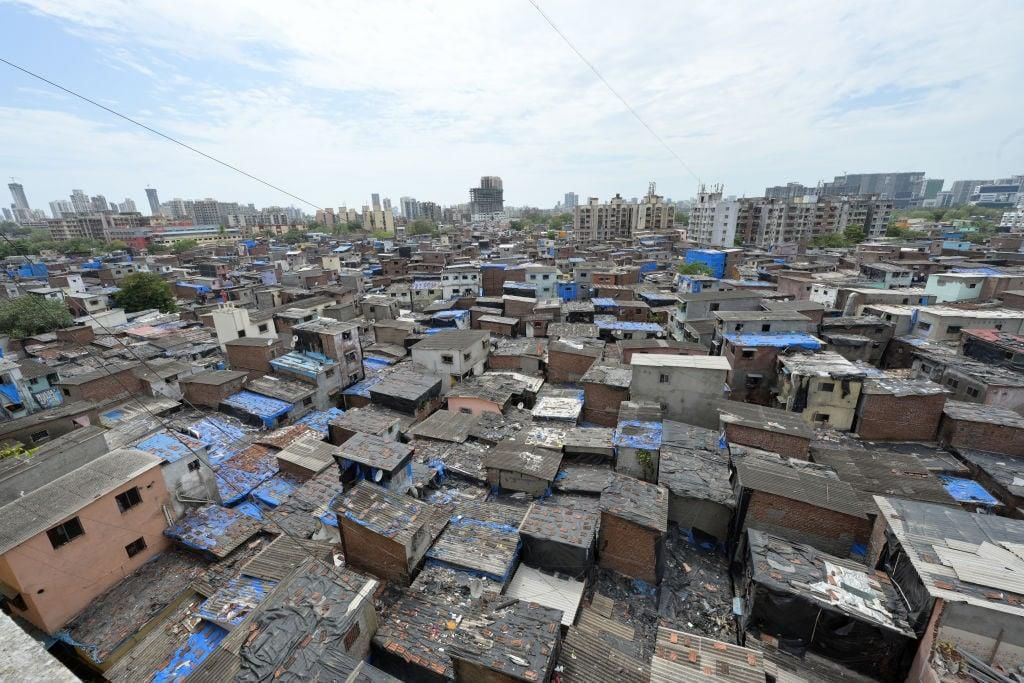
Why in News?
Following a Supreme Court (SC) directive, the Bombay High Court (HC) has initiated a first-of-its-kind review of the Maharashtra Slum Areas Act, 1971. The review aims to address systemic gaps causing delays in slum redevelopment projects, which violate slum dwellers’ right to shelter (Article 21) and livelihood.
Key Takeaways
- The Maharashtra government has the authority to declare an area as a “slum area” and can acquire it if necessary.
- The Slum Rehabilitation Authority (SRA) oversees redevelopment projects through private developers.
- Under the 1995 Maharashtra Slum Rehabilitation Scheme, developers fund redevelopment and provide tenements free of cost in exchange for additional construction rights.
- Slums constitute 17.4% of India's urban population, according to the 2011 census.
Additional Details
- What are Slums? Slums are defined by the United Nations as run-down urban areas characterized by substandard housing and poverty, lacking tenure security.
- Population growth and poverty are primary drivers of slum growth, with projections suggesting that 40% of the population will live in urban areas by 2026.
- Major issues in slum areas include health risks from waterborne diseases, exploitation of vulnerable populations, and a high incidence of crime.
- Challenges in slum rehabilitation include bureaucratic land acquisition processes, financial constraints, social resistance, and environmental degradation.
To address the challenges faced by slum dwellers, a comprehensive approach is needed. This includes investing in sustainable slum rehabilitation, creating clear legal frameworks for land acquisition, and promoting community engagement to respect social and cultural ties. By integrating environmental considerations and enhancing governance, it is possible to improve the living conditions in slums and foster significant social and economic returns.
SC Upholds Disability Rights as Fundamental
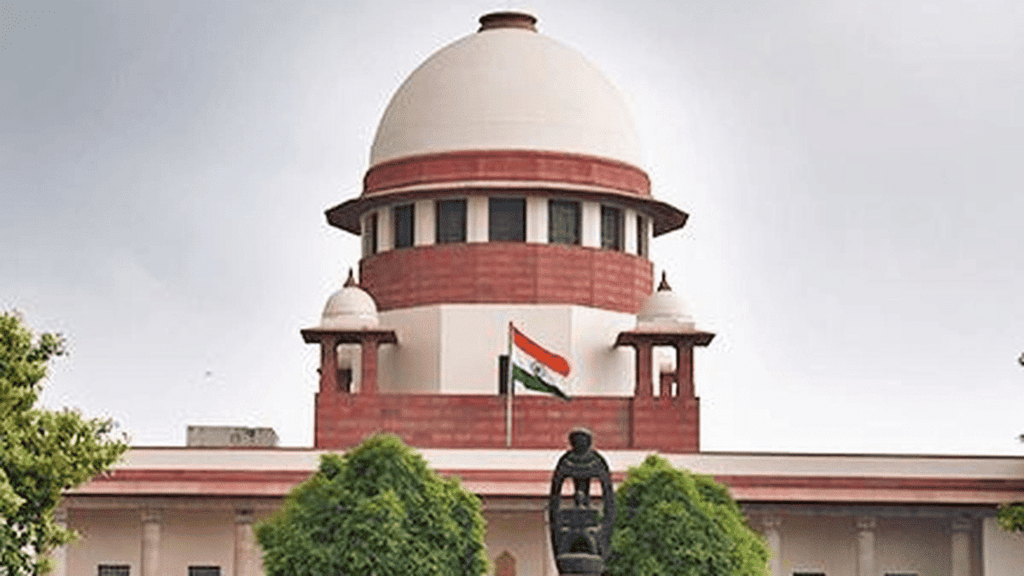
Why in News?
The Supreme Court has ruled that visually impaired candidates can participate in judicial service exams, affirming that the right against disability-based discrimination under the Rights of Persons with Disabilities (RPwD) Act, 2016 should be treated as a fundamental right.
Key Takeaways
- The Supreme Court struck down provisions in the Madhya Pradesh Judicial Service Examination Rules, 1994, and Rajasthan Judicial Service Rules, 2010, that excluded visually impaired candidates.
- The ruling emphasizes that exclusion based on disability violates the Constitutional rights of equality (Article 14) and non-discrimination (Article 15).
- The Court mandates a rights-based approach to employment for persons with disabilities (PwDs), ensuring necessary accommodations are provided.
- Relaxations in eligibility criteria for PwDs are to be aligned with those for SC/ST candidates when there is an insufficient pool of candidates.
Additional Details
- Recognition of Disability Rights: Exclusion from judicial services for visually impaired candidates is unconstitutional and requires the state to provide reasonable accommodations, as per the United Nations Convention on the Rights of Persons with Disabilities (UNCRPD) and the RPwD Act, 2016.
- Status of PwDs in India: According to the 2011 Census, persons with disabilities constitute 2.21% of the population, with various recognized disabilities including visual and hearing impairments.
- Constitutional Provisions: Fundamental rights and directives for the welfare of PwDs are enshrined in Articles 19, 21, 41, and various entries under the Panchayati Raj provisions.
- Laws Related to Disability Rights: The RPwD Act, 2016 aims to ensure equal opportunities and full participation of PwDs, while other acts like the National Trust Act, 1999, and the Mental Health Care Act, 2017, provide additional protections and rights.
The Supreme Court's ruling on the right against disability-based discrimination is a significant advancement towards inclusivity in public services. While the ruling marks progress, challenges remain for PwDs in India, including social stigmas, transportation barriers, and the need for inclusive policies. Ongoing reforms are crucial to enhance accessibility and participation for all individuals with disabilities.
Rising Obesity Burden in India

Why in News?
The Prime Minister has expressed concern over the increasing rates of obesity, particularly among children, and has called for a shift towards healthier lifestyles.
Key Takeaways
- Obesity is defined by the World Health Organization (WHO) as an abnormal or excessive fat accumulation that poses health risks.
- Current statistics show a significant rise in obesity rates among Indian women and children.
- Obesity is associated with various health risks, including cardiovascular diseases, diabetes, and certain cancers.
- The economic implications of obesity in India are substantial, projected to rise significantly by 2030.
Additional Details
- What is Obesity? Obesity is classified with a Body Mass Index (BMI) of 25 or above as overweight and 30 or above as obese. It is calculated by dividing weight in kilograms by height in meters squared (kg/m²).
- Obesity Statistics: According to the National Family Health Survey (NFHS-5, 2019-21), 24% of Indian women and 22.9% are classified as overweight or obese. The rate of overweight children under five has risen from 2.1% to 3.4% since the previous survey.
- Globally, from 1990 to 2022, obesity rates in children aged 5-19 years increased from 2% to 8%, while rates in adults rose from 7% to 16%.
- Associated Health Risks: These include cardiovascular diseases, diabetes, cancer, joint disorders, and psychosocial impacts such as low self-esteem and depression.
- Economic Implications: In 2019, obesity cost India approximately USD 28.95 billion (1.02% of GDP). This is projected to increase to 1.57% of GDP by 2030.
To combat obesity in India, a multi-faceted approach is required, focusing on nutrition, public awareness, and regulatory measures.
What are Overweight, Thinness, and Obesity?
- Overweight: Excess weight that can lead to health issues.
- Thinness: Insufficient weight that may also pose health risks.
- Obesity: A more severe form of overweight with increased health risks.
What are the Causes of Obesity?
- Unhealthy Diets: Increased consumption of high fat, salt, and sugar (HFSS) foods and ultra-processed foods (UPFs).
- Low Physical Activity: Sedentary lifestyles due to office jobs and excessive screen time affect nearly half of the Indian population.
- Poor Urban Infrastructure: Lack of safe spaces for physical activities discourages an active lifestyle.
- Air Pollution: Contributes to health risks and promotes fat accumulation.
- Socioeconomic Barriers: Limited access to nutritious foods for low-income groups and reliance on staple grains lead to imbalanced diets.
Way Forward
- Revamping Nutrition Intervention: Implementing focused nutrition efforts like 'Suposhan Abhiyan' and adopting mindful eating practices.
- Public Awareness: Recognizing obesity as a public health challenge and promoting preventive measures.
- Regulating Diets: Imposing higher taxes on HFSS and UPFs while subsidizing healthier food options.
- Obesity Screening: Mandatory measurements of height, weight, and waist circumference during health check-ups.
- School-Based Initiatives: Integrating healthy eating habits and nutrition education into school curricula.
In conclusion, addressing the obesity challenge in India requires comprehensive strategies involving various sectors to promote healthier lifestyles and improve public health outcomes.
|
112 videos|389 docs
|




















